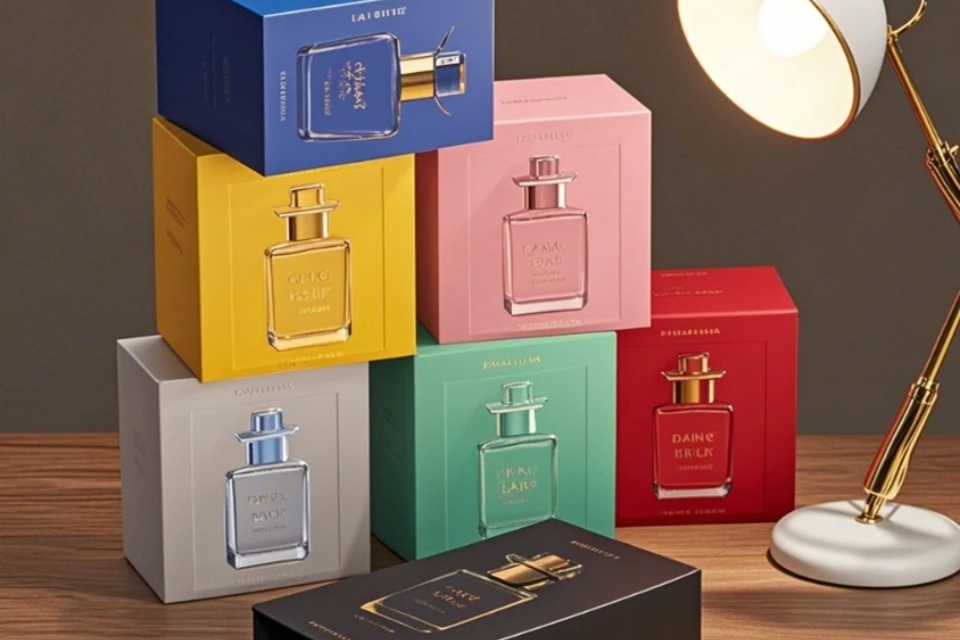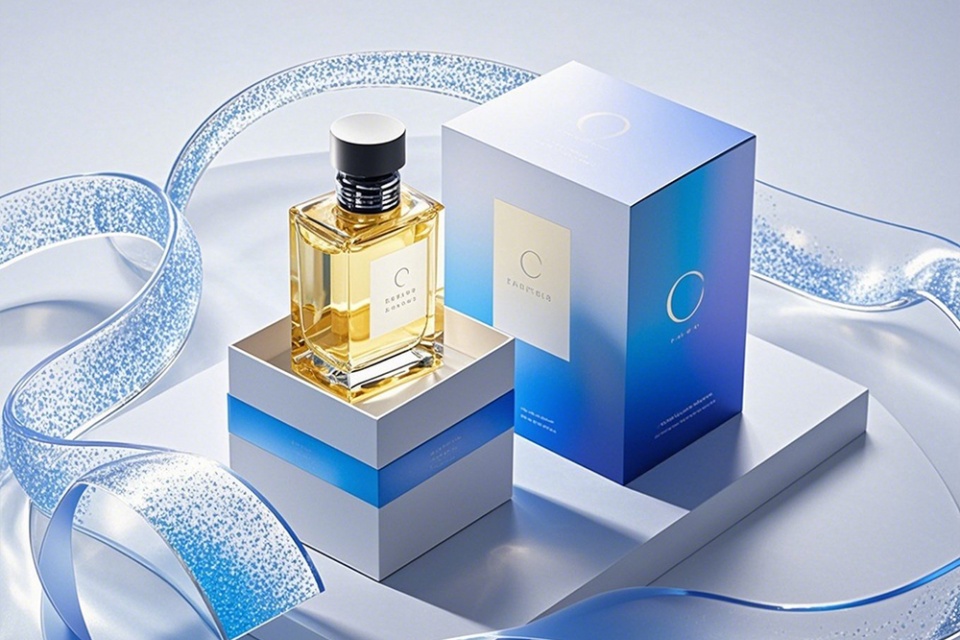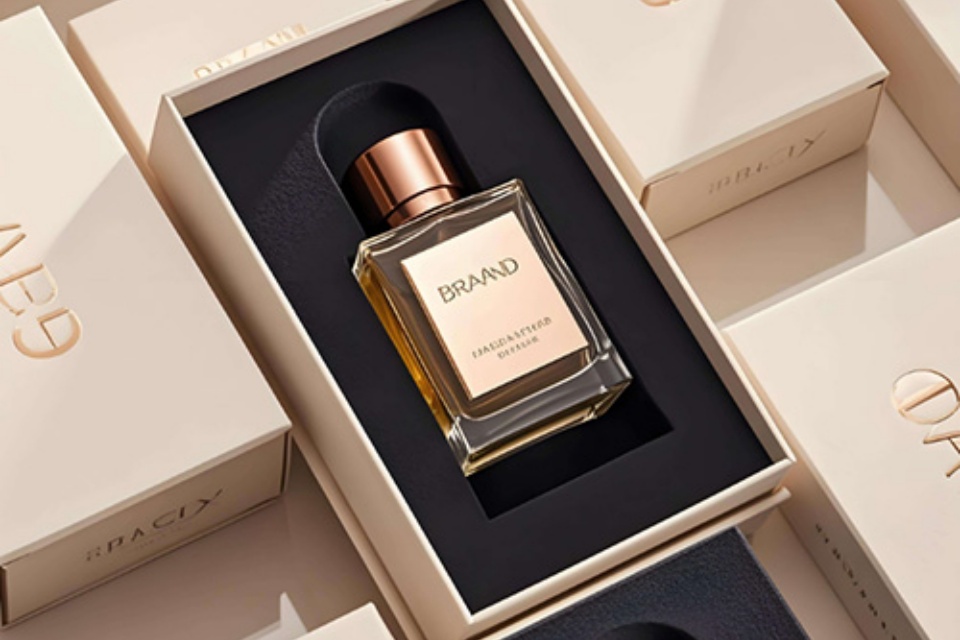Protecting Fragile Bottles: Perfume Packaging Engineering
Protecting Fragile Bottles: Perfume Packaging Engineering
Summary
Protecting Fragile Bottles: Perfume Packaging Engineering refers to the specialized field of design and engineering focused on creating effective packaging solutions for delicate perfume bottles, which are often made of glass and other fragile materials. The significance of this topic lies in the dual challenge of safeguarding these luxurious products during storage and transportation while also enhancing their aesthetic appeal to attract consumers. As the global perfume market continues to grow, the demand for innovative and sustainable packaging solutions has become increasingly critical, prompting brands to invest in advanced materials and design techniques that ensure product integrity and brand identity.
This area of packaging engineering encompasses various aspects, including material selection, sustainability practices, and advanced cushioning solutions. Designers must balance functionality with aesthetic qualities, often employing materials like glass, plastic, metal, and ceramic to cater to different market segments, ranging from luxury to mass-produced fragrances. Additionally, considerations around sustainability have gained traction, with brands increasingly opting for eco-friendly packaging alternatives that minimize environmental impact while still preserving the product's integrity.
Controversies in perfume packaging engineering often center around the environmental implications of packaging waste, particularly the use of single-use plastics. As regulations tighten, brands face pressure to adopt recyclable and biodegradable materials, prompting a shift towards circular economy practices. This transition not only addresses consumer concerns about sustainability but also presents challenges in maintaining the luxurious feel and brand identity associated with high-end fragrances. Furthermore, the ongoing pursuit of innovative design solutions, including the use of technology such as 3D printing, continues to shape the landscape of perfume packaging, fostering a competitive market where customization and consumer engagement play pivotal roles.
Overall, protecting fragile bottles through effective packaging engineering is a multifaceted endeavor that blends art and science, reflecting broader trends in sustainability, consumer preferences, and brand differentiation within the evolving perfume industry.
Types of Fragile Bottles
Antique Perfume Bottles
Antique perfume bottles represent a rich history of craftsmanship and design, often valued by collectors for their unique characteristics and age.
17th Century Glass Bottle
These bottles are among the rarest and most valuable in the perfume bottle market. Often adorned with intricate designs and unique shapes, they reflect the exceptional craftsmanship of their time, making them highly sought after by collectors.
Late 19th Century Porcelain or Ceramic Bottle
Late 19th-century bottles are often ornate, featuring hand-painted scenes, gilt details, or elaborate shapes. Their desirability increases if they are in excellent condition and bear a maker's mark, making them a prized addition to any collection.
Early 20th Century Leaded Glass Crystal Bottle
Bottles from the early 20th century are typically made of leaded glass crystal, showcasing the artistic design trends of the era. They often incorporate luxurious elements that enhance their aesthetic appeal and value among collectors.
Modern Perfume Bottles
Modern perfume bottles are primarily crafted from materials that offer both durability and aesthetic charm, contributing to the longevity of fragrances.
Glass Bottles
Glass remains the dominant material for perfume bottles due to its non-reactive nature, which helps preserve the scent unadulterated. Most modern bottles are made from soda-lime glass, while high-end options may feature lead crystal glass. Glass bottles are known for their elegant appearance, durability, and ability to withstand high temperatures, making them a preferred choice for luxury fragrances.
Plastic Bottles
While glass is favored for its aesthetic qualities, plastic is increasingly used due to its lightweight and shatterproof characteristics. Although not as elegant as glass, plastic bottles offer practicality for everyday use and are growing in popularity due to their ease of manufacturing and transportation.
Metal Bottles
Metal perfume bottles, typically made from aluminum or stainless steel, provide a contemporary aesthetic and high durability. They serve as an effective barrier against light and air, helping to preserve the fragrance for longer periods. Despite their advantages, metal containers can also pose risks of chemical reactions with certain fragrance components, which can alter the scent over time.
Ceramic Bottles
Though less common, ceramic bottles are valued for their artistic qualities and light-blocking capabilities, which protect the fragrance from degradation. They are often found in niche or vintage collections, appealing to collectors who appreciate their unique designs.
Design Considerations
The Importance of Brand Reflection
The design of perfume packaging is crucial, as it not only protects the fragile bottles but also serves as a direct reflection of the brand's identity. Packaging must encapsulate the essence of the fragrance while resonating emotionally with consumers. During the initial design phase, a comprehensive understanding of the brand's heritage, values, and target audience is vital. This ensures that the final design aligns with market trends and communicates the brand's story effectively.
Material Selection and Sustainability
Choosing the right materials is a fundamental aspect of perfume packaging design. Designers must consider various properties such as durability, aesthetic appeal, and environmental impact. In response to increasing consumer demand for sustainability, brands are increasingly opting for eco-friendly materials, such as biodegradable inserts and recycled paper. This shift towards sustainable packaging solutions not only minimizes waste but also enhances the luxury appeal of the product, allowing brands to maintain their market presence while fulfilling consumer expectations.
Aesthetic Versus Functionality
Balancing aesthetics with functionality is another critical consideration in packaging design. The bottle design should enhance the user experience while ensuring product integrity during transportation and storage. High-quality materials such as rigid board, corrugated cardboard, and foam inserts are commonly utilized to provide robust protection against impacts and vibrations, safeguarding the delicate contents within. Additionally, innovative manufacturing techniques, such as 3D printing and mold optimization, allow for the creation of intricate designs that do not compromise on durability.
Customization and Innovation
Customization plays a significant role in differentiating brands in a competitive market. Designers are encouraged to explore unique structural designs, colors, and finishes that reflect the brand's identity and appeal to its target demographic. Moreover, embracing innovation in packaging design can lead to the development of bespoke solutions that enhance both the aesthetic value and functional capabilities of the packaging, such as shrink-wrap techniques that offer exceptional stability and protection for fragile products.
Trends Influencing Design Choices
The perfume packaging landscape is constantly evolving, influenced by trends such as maximalism and minimalism. While some brands embrace bold and complex designs, others focus on minimalist aesthetics that prioritize sustainability. This duality allows brands to express their identity creatively while addressing environmental concerns, reflecting the industry's capacity to balance luxurious design with ecological responsibility.
Packaging Solutions
Custom Packaging Prototyping and Production
Before mass production, startups focus on transforming packaging ideas into tangible prototypes. This involves utilizing automated machinery for rapid manufacturing, coupled with advanced printing techniques like 8-color, water-based flexo press printing. Additionally, design and decoration processes are enhanced through the use of machines capable of foil-stamping, spot UV, debossing, and embossing, which contribute to creating visually appealing and protective packaging for fragile items such as perfume bottles.
Eco-Friendly Alternatives
With increasing regulations against single-use plastics, there is a significant shift towards recyclable packaging materials. Many companies are exploring alternatives like post-consumer resins (PCR) and molded pulp, which are derived from recycled materials and are recyclable themselves. Molded pulp, in particular, is noted for its eco-friendliness and ability to be tailored to fit various product sizes, making it suitable for packaging delicate items.
Advanced Cushioning Solutions
To ensure the safety of fragile products during transit, innovative cushioning materials have emerged. Products such as GreenWrap, which is a plastic-free alternative to bubble wrap, and Corrugated Bubble provide protective cushioning that is both effective and environmentally friendly. GreenWrap can be molded around products for optimal protection and presentation, while Corrugated Bubble is made from recycled materials and offers versatile application methods for cushioning fragile items.
Active and Customized Packaging
The incorporation of active packaging technologies is becoming increasingly relevant in sectors like food and cosmetics, addressing issues related to product spoilage. Custom-designed box inserts are also gaining traction, providing a void fill alternative that helps keep products secure during shipping. Moreover, 3D printing capabilities enable brands to create customized packaging solutions that enhance product visibility and appeal to consumers.
Subscription Box Packaging
In the beauty and personal care industry, subscription boxes have established a niche market, necessitating specialized packaging solutions. These boxes often incorporate innovative designs that not only protect the products but also enhance the unboxing experience for consumers. Custom folding carton boards, foils, and specialty coatings are employed to create aesthetically pleasing and functional packaging that meets the needs of modern consumers while prioritizing sustainability.
By integrating these diverse packaging solutions, brands can effectively protect fragile bottles like perfume while also aligning with eco-friendly practices and consumer expectations.
Testing and Standards
Ensuring the integrity and safety of perfume packaging is paramount, particularly given the fragile nature of glass bottles. Rigorous testing protocols and adherence to industry standards are essential components of the packaging development process.
Importance of Package Integrity
Package integrity is critical for protecting products and maintaining a brand's reputation. To this end, in-house testing such as International Safe Transit Association (ISTA) 6 testing is conducted to simulate potential conditions and hazards encountered throughout the supply chain. This includes assessments of material handling, compression, vibration, and free-fall drops, which are common during transit.
Compliance with Industry Standards
Adhering to safety and durability standards is essential for ensuring the packaging can withstand the rigors of shipping. High-quality, non-toxic materials are required to protect both consumers and the environment. Testing includes drop tests to evaluate how well the packaging withstands impacts and vibrations, as well as moisture and temperature resistance tests to ensure the perfume is safeguarded from environmental factors. Compliance with industry standards such as ISO and ASTM is crucial for maintaining product quality throughout its lifecycle, from production to the end user.
Prototyping and Testing Procedures
The development of perfume packaging involves creating prototypes that undergo a series of tests for performance and durability. Initial prototypes are crafted based on selected materials and design specifications, and they are subjected to rigorous evaluations such as drop tests and environmental assessments. Feedback from these tests leads to refinements in design and materials to ensure compliance with safety and quality standards before final production.
Final Quality Control
After the packaging design and materials have been validated, a final quality check is conducted. This process involves eliminating errors such as typos, duplications, or omissions to ensure that the packaging meets all necessary specifications before being delivered to clients. This thorough approach not only enhances the consumer experience but also strengthens brand integrity by minimizing potential issues related to packaging defects.
By rigorously testing and adhering to established standards, packaging engineers play a vital role in safeguarding fragile perfume bottles, thus enhancing product integrity and ensuring customer satisfaction.
Case Studies
Innovative Packaging Solutions
Sustainable Practices in Cosmetics
Major companies in the cosmetics industry, such as L'Oréal, Unilever, and The Body Shop, have begun integrating upcycled packaging into their product lines. This packaging often includes materials like recycled plastics, glass, and agricultural by-products, effectively reducing the environmental impact of traditional packaging methods. Notably, in January 2023, Fancl Corporation collaborated with Kirin Group to produce cosmetics packaging from beer brewing by-products, showcasing the potential of utilizing waste materials in innovative ways.
Recyclable Packaging Adoption
As regulations against single-use plastics intensify, businesses are shifting towards recyclable packaging solutions. One significant approach involves using post-consumer resins (PCR) derived from recycled consumer waste. This not only meets regulatory demands but also aligns with growing consumer preferences for sustainability. Startups are leading the charge by developing mono-material packaging that simplifies the recycling process, moving away from complex multi-layer systems. The global recyclable packaging market, valued at USD 197.08 billion in 2023, is projected to grow at a CAGR of 6.2% from 2024 to 2030, indicating a strong industry shift towards sustainable practices.
Customization and Brand Experience
Engaging Consumers with Custom Packaging
Brands like Jo Malone and Dior are redefining customer engagement through customizable perfume packaging. Offering services such as exclusive lettering and personalized gift boxes allows consumers to create unique products that resonate with their personal style. High-end brands further enhance their market presence by merging traditional craftsmanship with modern design techniques, using gold foil embossing and manual carving to create luxurious packaging experiences.
Technological Innovations in Packaging Design
The use of advanced manufacturing techniques such as 3D printing is becoming more prevalent in creating intricate packaging designs that were previously challenging to achieve. This technology not only allows for creative freedom but also promotes the use of sustainable materials, further aligning with consumer demands for environmentally friendly products. As brands innovate and adopt these technologies, they enhance both the aesthetic and functional aspects of perfume packaging.
Market Dynamics
Circular Economy Approaches
The growing awareness of sustainability has prompted many companies to adopt circular packaging methods. Utilizing biodegradable and recyclable materials is now common practice among businesses aiming to reduce their environmental footprint. This shift is not just a response to consumer pressure but also a proactive measure to comply with emerging regulations aimed at reducing plastic waste in the environment. This movement towards sustainable packaging solutions is not only beneficial for the planet but also represents a significant business opportunity.
Future Trends
Sustainable Packaging Innovations
As the packaging industry evolves, sustainability is becoming a pivotal focus for many brands. The shift towards eco-friendly materials is already gaining traction, with a notable movement away from traditional plastic packaging to more sustainable alternatives such as paperboard and cardboard containers. This transition is driven not only by environmental concerns but also by the potential for enhanced branding opportunities, as these materials provide larger printable surfaces for nutritional and marketing information. By 2024, it is anticipated that brands will significantly increase their adoption of sustainable practices, such as eliminating per- and polyfluoroalkyl substances (PFAS) and investing in recyclable materials.
Refillable and Reusable Packaging
The concept of refillable packaging is expected to flourish in 2024, particularly within the consumer-facing market for products like hair care and cleaning supplies. This trend towards reusability is not limited to consumables; it is predicted that non-consumable sectors, including electronics, will also begin to explore reusable packaging solutions. The push for refillable options aligns with a broader commitment to sustainability and resource conservation, reflecting a growing consumer demand for environmentally responsible practices.
Technological Integration
Future packaging is likely to leverage advancements in technology to enhance consumer engagement. The traditional use of QR codes is evolving into more interactive packaging experiences, where augmented reality (AR) and virtual reality (VR) could play crucial roles in storytelling and customer connection. This innovative approach aims to transform packaging from a mere protective layer into an interactive medium that can convey brand narratives and engage customers more effectively.
Quality Control and Customization
As manufacturers strive for higher quality and personalization, the implementation of rigorous quality control measures will become increasingly important. This is especially relevant in the production of glass and metal bottles for fragrances, where consistency and defect-free manufacturing are essential to maintaining brand integrity. Additionally, customization through innovative techniques such as 3D printing will allow brands to create unique and intricate designs, enhancing the visual appeal and market differentiation of their products.
Economic Benefits of Sustainable Practices
Adopting sustainable materials not only aligns with environmental goals but also presents economic advantages. The initial investment in sustainable production methods may be high; however, long-term savings can be realized through reduced energy costs and potential government incentives. Brands that successfully integrate sustainability into their packaging strategies are likely to enjoy enhanced public relations and marketing benefits, ultimately leading to increased sales and a competitive edge in the market.



